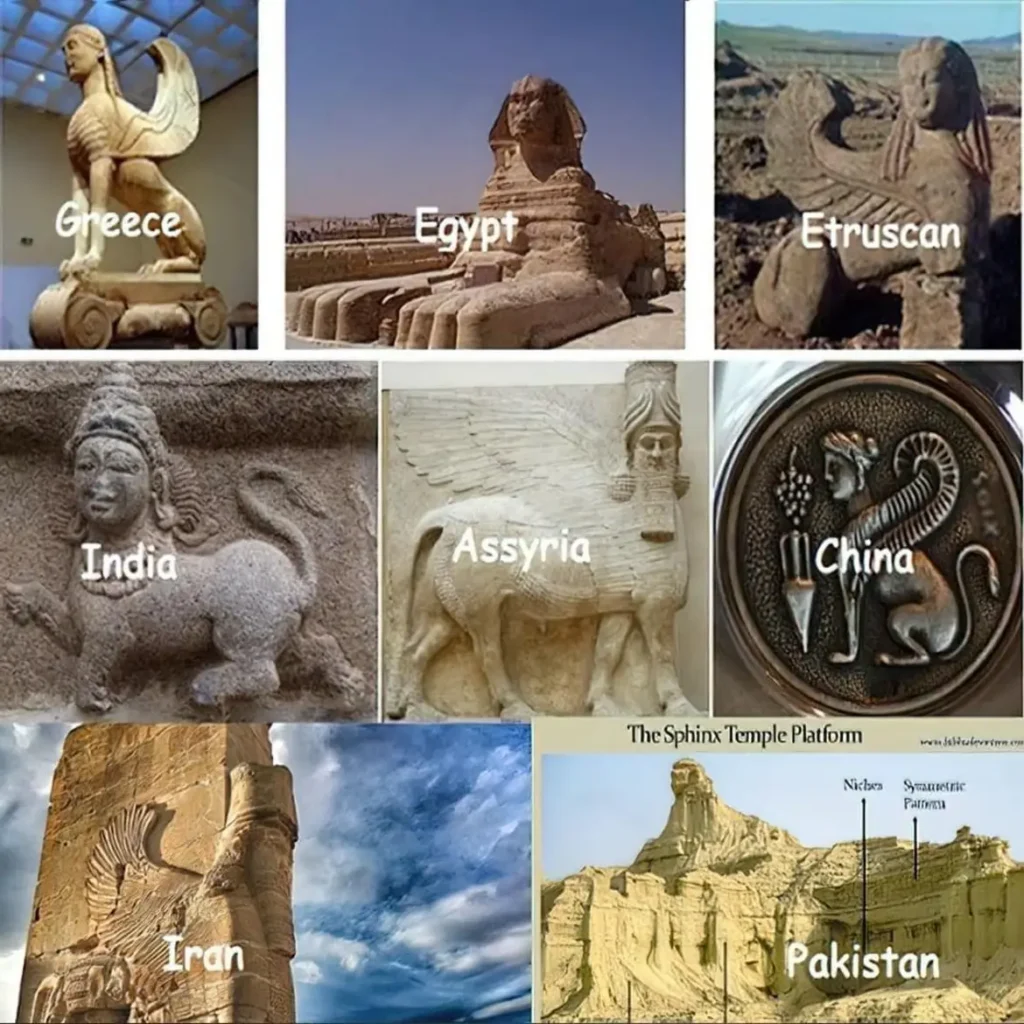Historical Significance of Jokhang Temple
Jokhang Temple, a site with a rich history that requires little introduction, is home to a unique piece of Tibetan art: a sphinx-like lion-human sculpture. This sculpture is part of a collection of wooden carvings that are over 1,300 years old, dating back to the Tubo period in Tibetan history.
The Sphinx-like Sculpture: A Tubo Era Masterpiece
Among the circle of wooden lion sculptures located on the second floor of the Jokhang Temple’s main hall, the most noteworthy is the lion-human figure. This sculpture is a fascinating example of the artistic legacy of the Tubo period. It stands out not only for its age but also for its distinct style, representing the image of the lion – an “exotic mythical creature” – which was widely popular and uniquely stylized in Tubo art.

Artistic Connections and Influences
The wooden lion sculptures at Jokhang Temple share stylistic similarities with later lion images in Tubo cliff carvings and stone sculptures in front of the Tibetan royal tombs in Chongye. These similarities highlight a common artistic thread during the Tubo period. Despite later associations with the legend of Songtsen Gampo, the essential nature of these artworks remains unchanged.
Architectural and Artistic Relations
The wooden columns on the second floor of the temple are indicative of Tubo period remnants. The style of door frames and columns bears a striking resemblance to the art found in the Ajanta Caves and Nalanda in India. This suggests a deep connection, possibly influenced or even crafted by Nepalese artisans.
Source of Information
The details provided here are based on the research “The Shadow of the Divine: The Artistic Style and Origins of the Tibetan Wood Carvings in Jokhang Temple,” which provides an in-depth look into the artistic heritage of these unique Tubo period sculptures.
Unraveling the Myths: A Journey Through Ancient Civilizations and Legendary Creatures
The allure of ancient civilizations and mythical creatures has always captivated human imagination. Stories of pre-Jurassic human civilizations, as portrayed in popular culture like the American TV series “FRINGE,” intertwine with legends of Atlantis, Shambhala, and Xiang Xiong. These tales, while lacking concrete scientific backing, continue to fascinate us, offering a blend of mystery, history, and myth.
Atlantis, Shambhala, and Xiang Xiong: Between Myth and History
Atlantis, a legendary island first mentioned by the philosopher Plato, Shambhala, a mystical kingdom in Buddhist lore, and Xiang Xiong, associated with the ancient Bon religion of Tibet, are names steeped in mythological grandeur. Despite their fame, these places remain elusive in the realm of verified historical facts, symbolizing humanity’s quest for understanding our mythical past.
Artefacts of Legend: The Garuda and Tiantie Mysteries
The tales of artefacts such as the horns of the mythical Garuda or the mysterious Tiantie, supposedly meteoric iron used in Tibetan culture, highlight our fascination with the unknown. While such items are integral to cultural myths and artistic expression, they lack substantiation in mainstream archaeological and historical research.
Deciphering the Past: The Role of Ancient Scripts
The deciphering of ancient scripts, exemplified by the Rosetta Stone’s pivotal role in understanding Egyptian hieroglyphs, marks a genuine historical achievement. However, claims about Tibetan scripts linked to mythical objects or lost civilizations often venture into the realm of speculative fiction, showcasing our enduring intrigue with ancient languages and lost knowledge.
Mythological Wonders: The Roc and the Sphinx
The Roc, a colossal bird in Middle Eastern and South Asian mythology, and the Sphinx, a legendary figure in Egyptian, Greek, and South Asian traditions, embody the rich tapestry of global mythologies. These creatures, while not historical, are culturally and symbolically significant, representing the power of myth in shaping human understanding and art.
Edgar Cayce and the Sphinx: A Psychic’s Perspective
Edgar Cayce, a renowned psychic, suggested that the Sphinx was evidence of an ancient civilization predating historical records. While his views add to the mystique surrounding the Sphinx, they remain part of Cayce’s psychic readings rather than established archaeological findings.
Conclusion: The Intersection of Myth and History
The exploration of ancient civilizations and legendary creatures like the Roc and Sphinx reveals a fascinating intersection of myth, history, and cultural legacy. While these stories may not be historically accurate, they play a crucial role in our understanding of human creativity and the enduring power of myths in shaping our world .
.
